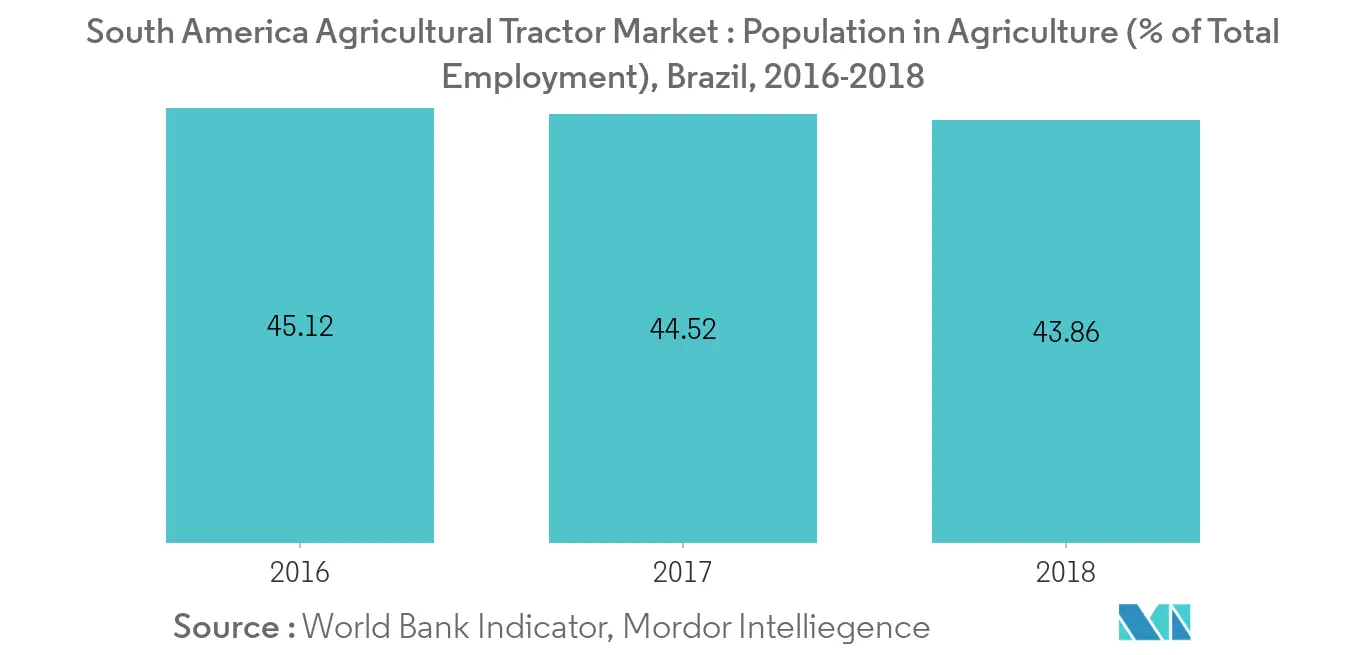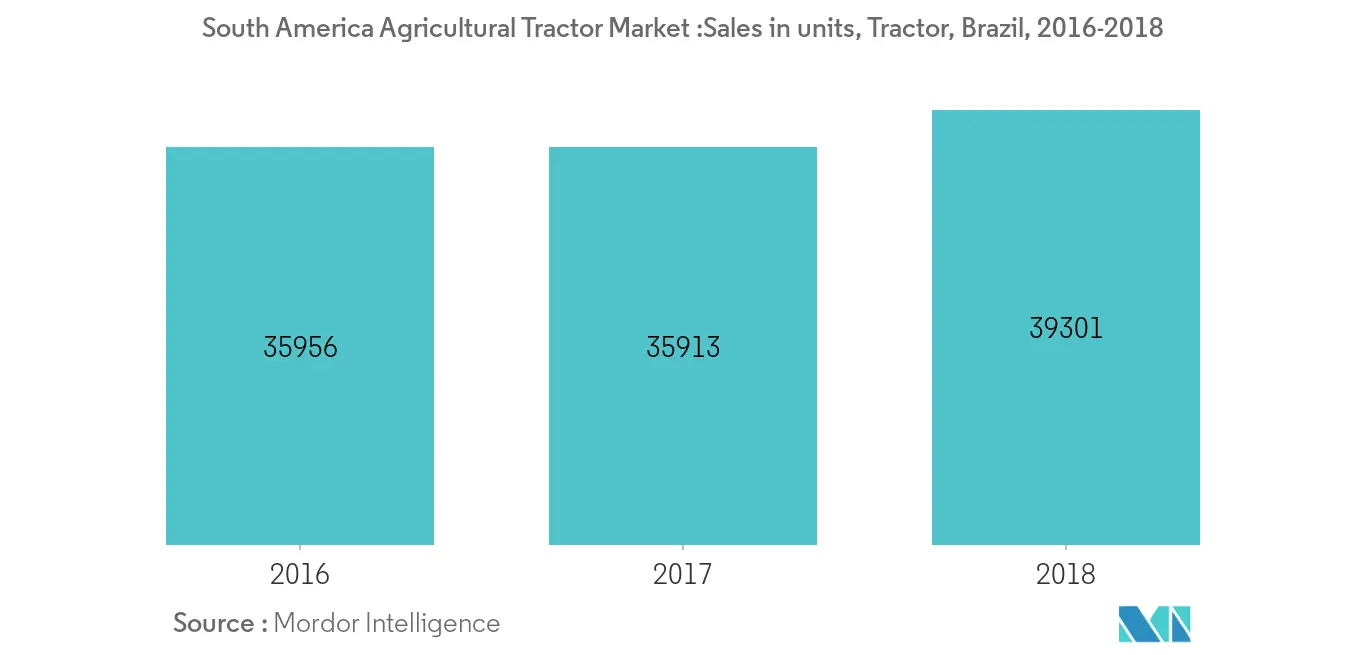Market Trends of South America Agricultural Tractors Industry
This section covers the major market trends shaping the South America Agricultural Tractor Machinery Market according to our research experts:
Increasing Cost of Farm Labor Driving the Market
The cost of farm labor has a direct relationship with the percentage of the total population of a country employed in agriculture, considering simple demand-supply economics, thereby affecting the agricultural tractors market in the region. On average, emerging economies, such as Brazil and Argentina, have larger percentages of the population dependent on agriculture. However, the percentages have declined over time as a large number of people migrating to urban areas every year. As a result, the percentage of the population engaged in agriculture in Brazil fell to 43.86% in 2018, as compared to 45.12% in 2016. Due to the decline in agricultural labor, the cost of farm labor is rising. Hence, it is expected to increase the demand for agricultural tractors, during the forecast period.

Brazil - The Largest Market for Tractors in South America
Brazil was the largest market for tractors in South America, in 2019. According to the Brazilian Department of Agriculture, around 50% of the farmers own 500 acres or more in the country. Manual plowing, harvesting and other operations have been touted as unfeasible and time-consuming, thus, giving rise to a strengthened demand for tractors and machinery, in order to address challenges, such as cost, accuracy and labor shortage. According to the National Association of Manufacturers of Automotive Vehicles (ANFAVEA), the year-on-year tractor sales in the country increased by 71.6% in January, as it recorded the sales of 2,025 units in January 2019, as compared to 1,180 in January 2018, but the sales reduced to 1,194 units in February 2019. Companies are investing in R&D to innovate new series of tractors in the HP range suitable for Brazilian farms, which is further expected to drive the overall market for tractors in the country.


